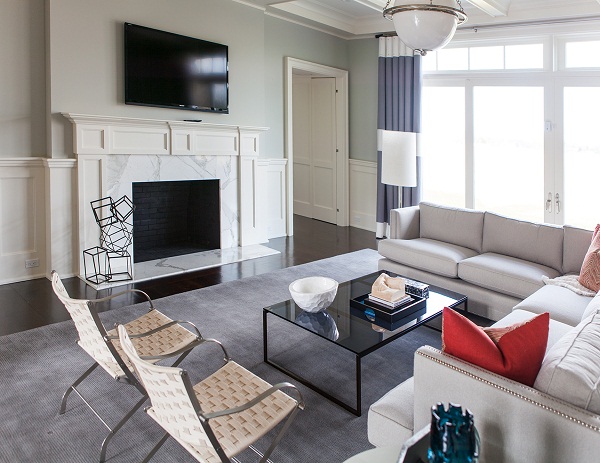Just because you don’t have a degree in Interior Design, doesn’t mean you shouldn’t know what’s best for your home. Aesthetics are a major part of interior design, but overwhelming the eye is a major no-no. These five principles offered by HG Stones can help you find your design equilibrium, and to create a dwelling worthy of bragging about.
Harmonize that House
We’ve all heard it before, homes should have harmony. But what exactly does that imply? In layman’s terms, it means that the entire space should be on the same accord. Though every room can have a distinct design touch, ultimately, the home should be linked by a common theme. Color is a great way to choose the storyline of your residence. Unifying separate rooms and spaces is easy, when they share a color theme. Pick your three favorite colors, and go color crazy, perhaps displaying various shades in different rooms.
Localize the Focal Point
Focal points are extremely important, and there’s no rule that says a room can have just one. A Calacatta marble fireplace or flat screen television, are merely two examples of eye-catching visuals. A focal point must be strong enough to draw the viewer in, giving them a desire to look beyond. However, the ultimate goal is to get a “wow!” not a “what?” factor. Keep in mind that whatever the focal point(s) will be, it should be in line with the room’s total story.
Follow the Rhythm
Generating rhythm in an interior space is easier than you might think. Just like with music, repetition, alternation, and progression are three main elements. Repetition is the easiest way to attain rhythm and involves recurring visual patterns. Repeating design elements like color, texture, line, or light in an arranged way can animate your space. Alternation is defined by alternating two or more elements in a regular pattern. For example, this design can follow an ABCABC or ABBABB formula. Rhythm can also be achieved through progression. Small objects that become large or a gradation of color in a regular manner. Candles that start from small to large in a progressive style is an excellent way to establish design rhythm encourage boost visual excitement.
Balancing Act
In order for a room to reach it’s full design potential, it must be balanced. There are three forms of balance, symmetrical, asymmetrical, and radial. Symmetrical balance is the most traditional, and is defined by a room being identical on either side of its vertical axis. Unlike symmetrical, asymmetrical balance allows for dissimilar objects, as long as the “visual weight” is the same. With radial balance, design elements are arranged around a single central point.
The Devil is in the Details
Whoever said don’t sweat the details, is sadly mistaken. When it comes to interior design, even the little things matter. Lampshade trimmings, cupboard handles, all contribute to the overall design story. Every element of the home should work in a cohesive fashion. Though the minor details shouldn’t be obvious, they should compliment the aesthetic of your interior space. So be wary of color, scale, and proportion, when writing the final chapter on the design story of your home.
